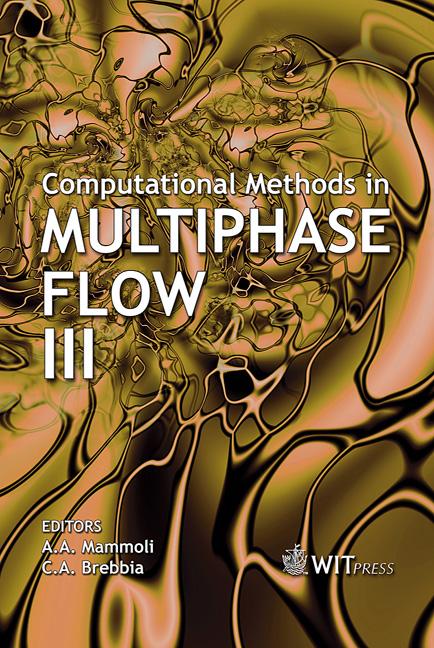Formulation Of A Two-phase Filtered Density Function Approach For Large Eddy Simulation
Price
Free (open access)
Transaction
Volume
50
Pages
8
Published
2005
Size
380 kb
Paper DOI
10.2495/MPF050251
Copyright
WIT Press
Author(s)
M. D. Carrara & P. E. DesJardin
Abstract
Two-phase velocity-scalar filtered density function (FDF) methods have recently been extended for large eddy simulation (LES) of separated two-phase flows [1]. Several terms in the two-phase FDF transport equation are unclosed and must be modeled for practical application of the two-phase FDF theory. Some terms, such as conditional dissipation in momentum, scalar, and momentum-scalar phase spaces are analogous to those in the single-phase velocity-scalar FDF formulation for which closures are readily available. Phase-coupling and interphase conversion terms, however, which are unique to the two-phase FDF formulation are unclosed and must b e modeled. There are, then, th ree d istin ct types o f unclo sed terms in th e two-phase FDF formulation: conditional dissipation terms, phase-coupling terms and interphase conversion terms. In this study, the mathematical formulation of this approach is presented and conditional dissipation, phase-coupling and interphase conversion terms are identified and their connection to standard LES closures identified . 1 Two-phase FDF transport equation Two-phase probability density function (PDF) methods have recently been formulated and successfully applied for dispersed/continuum phase flows [2, 3, 4]. Probability density function methods are based on defining a suitable set of flow realizations over which the PDF may be defined in the ensemble statistics context and therefore in practice are devoid of any spatial information about the two-phase flow. That is to say, turbulent flow field information in the PDF approach must be given in the time-averaged or RANS context, and consequently coupling to a RANS calculation for the carrier gas field is common [4, 2]. Filtered density func-
Keywords





